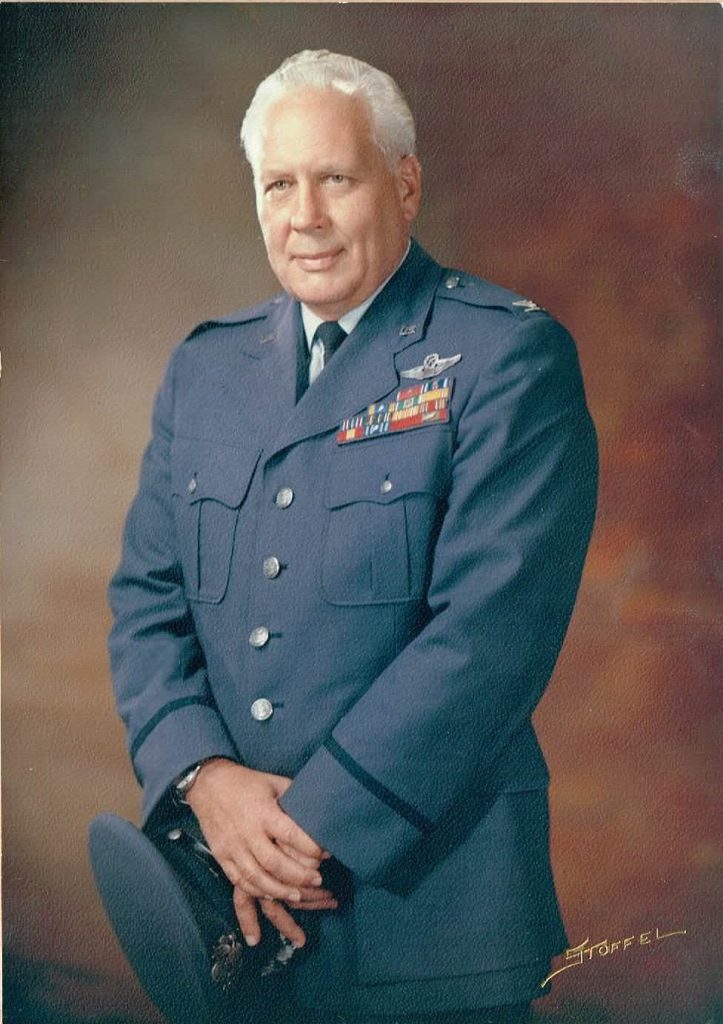Colonel Clifford Heflin was a decorated member of the Armed Forces, serving in the Air Force for 31 years. He commanded the 216th Army Air Forces Base Unit Special Airfield at Wendover during the Manhattan Project.
Colonel Heflin began his military career in the Air Cadets in 1938 at the age of 21. In just three years, his technical and leadership skills garnered him the rank of Major. At the start of World War II, Colonel Heflin had a succession of roles flying bomber planes involving anti-submarine missions. He was then given an assignment to work with the Office of Strategic Services (OSS) in England, and became commander of a secret unit known as the “Carpetbaggers.” The Carpetbaggers dropped supplies to the Allies and armed resistance movements in enemy territory.
His work with the Carpetbaggers brought him to the attention of the Manhattan Project’s top military commanders, who assigned Colonel Heflin to be commander of the 216th Army Air Forces Base Unit Special Airfield. Colonel Heflin, along with Colonel Paul Tibbets, who commanded the 509th Composite Group which dropped the bombs on Hiroshima and Nagasaki, shared parallel chains of command at Wendover.
Colonel Heflin’s bravery and superior skills in commanding the Carpetbaggers garnered him the Legion of Merit, awarded to him by Eisenhower. He was also given the French Cross of War and the Legion of Honor, award by the French government.
After the war’s end, Colonel Heflin was transferred to Stead Air Force Base outside of Reno, Nevada as commander. He went on to become the base commander of Lowry Air Force Base in Denver. In 1968 Colonel Heflin retired from the Air Force and moved to Reno.
For more information about Col. Heflin's career, listen to interviews with his daughter, Catherine Dvorak, and her husband, Darrell Dvorak. Darrell has published two articles on Col. Heflin's career: "The Other Atomic Bomb Commander" and "The First Atomic Bomb Mission."





